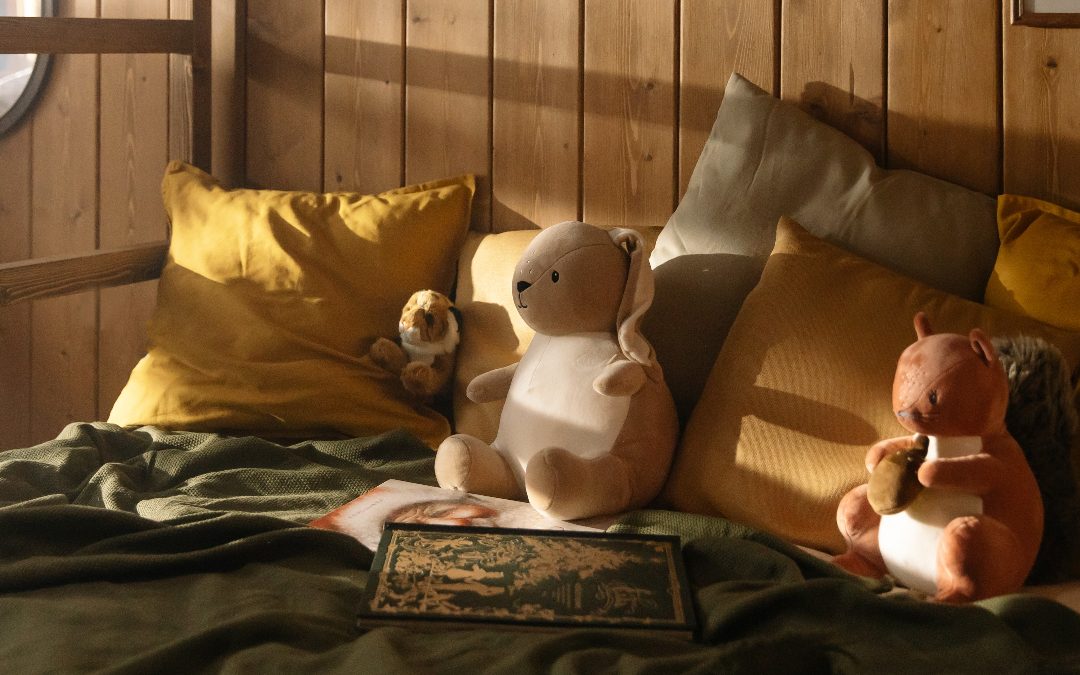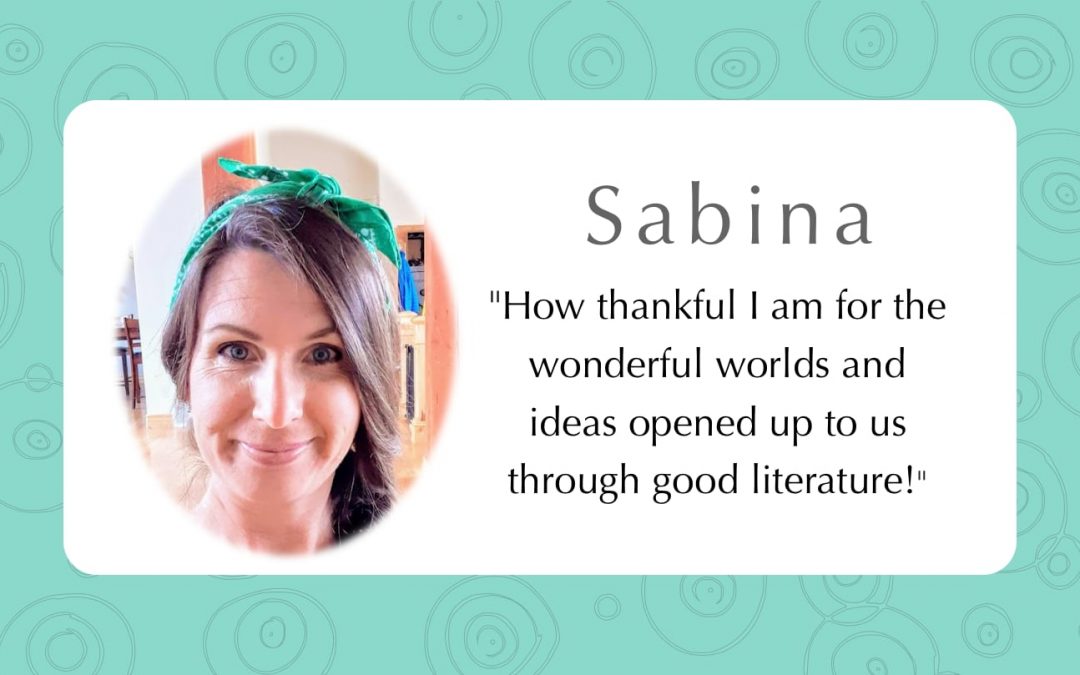
Reading with Fluffy Friends
The other night, our little girls begged me to repeat the story I had recounted the night before. I preferred to hear my husband tell it, so I turned the spotlight on him. Less than a minute after he began, our three-year-old suggested her Meow-Meow “read” it instead. He obligingly held her favorite stuffed animal in front of his mouth and switched to his kitty voice, which sounds surprisingly like Julia Child, kicked up an octave—maybe two. I wish I could adequately describe the belly laughs, giggles, and wiping of eyes that ensued. Oh, how our storytime was transformed by that little fluffy kitten.
That gleeful experience reminded me of a sweet poem by Kenn Nesbitt. I had read it to our kids a few months ago, from One Minute till Bedtime: 60-Second Poems to Send You off to Sleep.¹ It presents a peek into the special relationship a child can have with a stuffed animal.
Have I Told You?
Ted, have I told you
you’re cushy and cozy?
You’re comfy to cuddle
and hold when I’m dozy.
I love how you nuzzle,
so fuzzy and snug.
There’s no one I’d rather
have here for a hug.
So read me a page
and I’ll read one to you.
We’ll sing till we’re sleepy
and then, when we’re through,
we’ll tuck in our covers,
we’ll shut off the light,
and drift off to dreamland
together tonight.
I’m sure you have witnessed a child attached to a stuffed animal and the great imaginative play it inspires. More recently, we have found ways to harness that connection to help children increase their desire to read. In 2007, a library in Pennsylvania created an adorable program where children drop off their stuffed animals for a sleepover. Volunteers pose the animals reading around the library, then take photos. The animals line up in the morning with the books they selected to check out with their human.
I absolutely love this idea for its creativity and whimsicality. What’s more, the outcome of this event is equally amazing. A 2017 study from Japan revealed that this stuffed animal sleepover program “increased the number of children who read to the stuffed animals, and suggested that continuing to engage children in the make-believe world of their toys might be one method of sustaining their interest in early reading.”²
So use your child’s fluffy friends to your advantage! Position them as if they are reading a picture book at a small table. Have them sit atop a pile of books. Stand them up as though they are perusing your home library. This will show your little one that their friend wants to read. And they may naturally begin to read together. If not, you might want to encourage your child to read aloud to the stuffed animal. This activity can help eliminate performance anxiety.
Parents can also check out books that have the same main character as their child’s lovey, then enjoy a fun interactive reading all together. Or in reverse, you may select toys that appear as characters in picture books and present both to your children to use as their imagination dictates. However you choose to do it, pairing reading with a toy or stuffed animal can revolutionize your reading time. The result?
“When parents read to their children, it is a passive form of reading for the child. But when children read to their stuffed animals, it is a more spontaneous, self-directed form of reading, helping them develop into more active readers.”³
What an amazing benefit! And isn’t it just the sweetest thing? I would love to see photos of your children reading to their stuffed animals. Post it to #readingwithfluffyfriends and prepare yourself for cuteness overload.
Photo Credit: cottonbro from Pexels
¹ Nesbitt, K., & Niemann, C. (2016). One minute Till bedtime: 60-Second poems to send you off to sleep. Little, Brown and Company.
² Okazaki, Yoshihiro, and Yuki Yamada. “The Stuffed Animal Sleepover: Enhancement of Reading and the Duration of the Effect.” Define_me, www.cell.com/heliyon/fulltext/S2405-8440(16)30746-0.
³ “Sleepovers with Stuffed Animals Help Children Learn to Read.” ScienceDaily, ScienceDaily, 28 Feb. 2017, www.sciencedaily.com/releases/2017/02/170228084213.htm.






Recent Comments